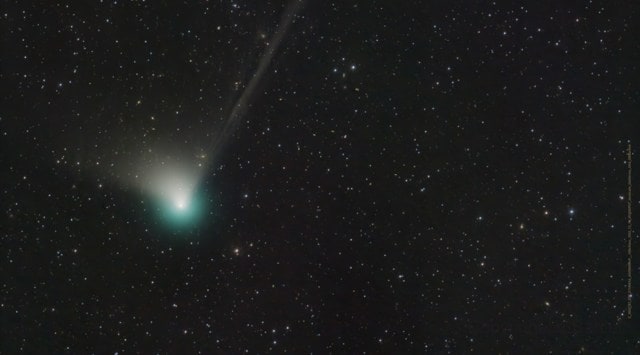Potential naked-eye comet to make close approach to Earth in February
A comet is currently in the solar system and would make a close approach to Earth on February 2. If it continues on its current trajectory, it is possible that the comet would be visible with the naked eye.
 Green comet 2023: The comet will be moving at a speed of around 57 kilometres per second with respect to the Earth when it makes a close approach. (Image credit: Dan Bartlett, NASA)
Green comet 2023: The comet will be moving at a speed of around 57 kilometres per second with respect to the Earth when it makes a close approach. (Image credit: Dan Bartlett, NASA) A recently discovered comet, dubbed C/2022 E3 (ZTF) is now passing through the solar system and should be visible with a telescope and maybe even binoculars. The comet was first spotted by astronomers using the wide-field survey camera at the Zwicky Transient Facility last year in early March. It will make its closest approach to the Sun on January 12 before making its closest approach to Earth on February 2.
Comets are typically unpredictable but according to NASA’s Jet Propulsion Laboratory (JPL), if C/2022 E3 (ZTF) continues on its current trajectory, it will be very easy to spot it with binoculars and might even be visible to the naked eye under dark skies. Skywatchers in the Northern Hemisphere will be able to find the comet in the morning sky in January as it moves fast in the northwest direction.
According to Space.com, observers should look for the comet when the Moon is dim in the sky meaning that the new moon on January 12 is an excellent opportunity to do this. During the comet’s close approach on February 2, it will be in the Camelopardalis constellation.
C/2022 E3 (ZTF) 2022 jan.2 5.00 UT LRGB 45min 11″ RASA QHY600 Michael Jäger pic.twitter.com/du6bSHJKRv
— Michael Jäger (@Komet123Jager) January 2, 2023
According to JPL’s Small-Body database, the comet could come within 0.28389 astronomical units of the Earth’s surface. One astronomical unit is the distance between the Earth and the Sun. This means that the comet could come within 43 million kilometres of Earth. When it makes its close approach to our planet, the comet will be travelling at a speed of around 57.4 kilometres per second with respect to the Earth.







